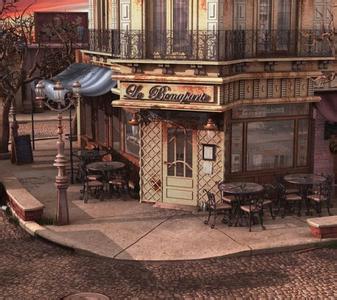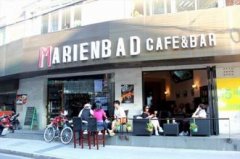Taste balanced refreshing Ecuadorian fine coffee varieties cultivation market price profile

In 1535, Frey Thomas de Belanga of Spain and others stumbled upon the Galapagos Islands. Thomas was born in 1487 on the Douro River in the province of Soria, Spain, and was the fourth bishop of Panama at that time. He was ordered to go to Peru. When his ship set sail from Panama on February 23, under the impact of a strong current, they were taken to the unknown sea and discovered a small island in the Galapagos Islands on March 10. At that time, there were only two days of fresh water left on the ship, and the sailors landed in lifeboats and found a large number of seals, sea turtles, giant tortoises that could carry people, and iguanas that looked like venomous snakes, but they did not find fresh water, so they sailed to another larger island more than 20 kilometers away. As there was still no wind, it took them several days to get there, and the water ran out quickly and had to starve, including no grass for the horses on board, including Frey Thomas de Belanga, 340 years after the island was discovered, in 1875, a native named Corworth came to St. Cristobal Island, where he established the Hasunda Cafe. And planted about 100 hectares of Arabian bourbon coffee trees. Because the plantation is located between 140m ~ 275m above sea level and the climate is equivalent to that of 915m ~ 1830 m inland, the unique geographical conditions are very suitable for the growth of super hard coffee beans (SHB) with high acidity, so this kind of high-quality coffee has set up a well-known brand in South America, Ecuadorian Class A coffee, and has a large state-run planting value garden. Produced from the natural vegetation belt of 1300-2000 meters highland, it is popular in Europe and America, and we can taste the exquisite world-class Arabica Arabica flavor at supermarket prices.
ES Coffee is a clean organic coffee grown on the slopes of the Andes in Latin America. It is 100% pure coffee, and the quality of our coffee has been guaranteed and improved by working to improve the economic and working conditions of the plantation, while maintaining the small scale of the coffee plantation and the biodiversity in the hospital. In addition, it is one of the very important economic sources of coffee origin, because it is all dried and packaged locally, which ensures that it is a very unique kind of coffee in the world! At the same time, it ensures its unique taste.
Central mountain: after entering Ecuador from Colombia, the Andes is divided into the eastern and western Cordillera mountains, with a plateau high in the north and low in the south, averaging between 2500 and 3000 meters above sea level. The Andes run through the middle of the border. The ridges crisscross, dividing the plateau into more than ten intermountain basins. The most important are the Quito basin and the Cuenca basin in the south. There are many volcanoes and frequent earthquakes in the territory. The famous Kotopaxi volcano, 5897 meters above sea level, is one of the highest active volcanoes in the world. Chimborazo Mountain in central Ecuador, 6262 meters above sea level, is the highest peak in Ecuador, Mount Chimborazo in Ecuador. It is 6384.1 kilometers from the center of the earth to the top of the mountain. Mount Chimborazo, located in the West Cordillera in the Andes, has long been mistaken for the highest peak in the Andes. It is a dormant volcano with many craters and glaciers at the top of the mountain, which is more than 4694 meters high. Guayaquil is the largest city in Ecuador and a major port along the Pacific coast.
Pelicans cruising the waters of the Galapagos Islands
Pelicans cruising the waters of the Galapagos Islands
The right bank of the Guayas River in Guayaquil Bay in the southwest is known as the "coastal pearl of the Pacific Ocean". Guayaquil, Eritrea's largest industrial and commercial city, is also the largest coastal port city in Eritrea, with a population of 2.6 million.
Port of Guayaquil
Port Guayaquil is the largest seaport in Ecuador. It faces the Pacific Ocean and backs against Mount Santa Ana. The nearby island of Pune serves as a natural barrier to protect the harbour from storms. There is a wharf in the south, which is more than 900 meters long. Ships from different parts of the world flying various flags are moored in the harbor. The port railway leads to the capital Quito, and highways connect Quito with other cities in the country. Bananas, cocoa, coffee, cotton and other products from all over the country are collected and distributed here. Guayaquil has also played an important role in the history of friendly exchanges between the peoples of China and Ecuador. As early as the 18th century, Chinese clothing, textiles and other goods were shipped to Ecuadorian cities through Guayaquil. In August 1978, the Chinese cargo ship Jialing River arrived here for the first time. Most of the import and export goods of the two countries are transhipped through Guayaquil.
The Arabian Coffee Tree was first introduced to Ecuador (Ecuador) in 1952 and its coffee is of good quality, especially the coffee harvested in early June. Ecuadorian coffee beans can be divided into two varieties: Galapagos and Gigante, both of which have the characteristics of large granules and heavy weight. Ecuadorian coffee can be divided into first class (No.1) and super excellent (ExtraSuperior) according to its quality. They are mainly exported to the Nordic countries of Scandinavia.
The main problem facing coffee producers is their efforts to maintain stable quality. The coffee here is generally well-balanced and refreshing, with a unique aroma.
Ecuador is one of the few countries in South America that produces both Arabica coffee and Robbins coffee. However, as the land suitable for Arabica coffee trees is decreasing, the production of Robbins coffee is gradually increasing. The best Arabica coffee comes from the Andes, especially the ChanchamgoValley, which is divided into two series of mountains, extending from south to north to the Galapagos Islands in central Ecuador. Coffee is recognized as green natural coffee, because the Ecuadorian government has designated the islands as a national park, not only does it no longer allow the reclamation of new agricultural land, but also forbids the use of fertilizers, pesticides, herbicides and other chemicals. Although the altitude of about 200m on the island is very low, but under the special influence of the sea, the climate of this area is equivalent to the climate of terrestrial 1000m-1800m, which is very suitable for the growth of coffee, especially the quality of extra hard coffee (SHB) is excellent.
Coffee is also produced in Ecuador. Ecuador's coffee grows well because the Andes pass through the middle, coupled with sufficient precipitation, suitable temperatures and rich light under the influence of the tropical climate. Top coffee Gigante and coffee from the Galapagos Islands are the best of coffee, although Arabica coffee has not been grown in Ecuador for a long time.
Ecuadorian coffee has distinctive South American coffee characteristics. The fragrance is soft, as if you can go back to the ancient and mysterious Inca empire. Coffee is a good history, you need to savor it carefully in order to understand the vicissitudes of life.
Balanced with low acidity and rich aroma. The bitter taste is not obvious, the taste is clear, but there is a lingering aftertaste for a long time. The superior environment creates the crisp character of coffee, and the enthusiasm of coffee farmers gives coffee enthusiastic life.
The Republic of Ecuador is located in northwestern South America. It is bordered by Colombia in the northeast, Peru in the southeast and the Pacific Ocean in the west. It covers an area of 256370 square kilometers and the coastline is about 930km long. The equator runs through the north of the border, and Ecuador means "equator" in Spanish. Ecuador is divided into the western coast, the central mountains, the eastern Amazon River basin and the four central regions of the Galapagos Islands with diverse climatic conditions.
The western coastal plain belongs to the tropical rain forest climate, with an average temperature of 23-25 ℃.
The central Andes. The intermountain basin in this area belongs to the savanna climate, and the mountain belongs to the subtropical forest climate, with perennial snow above 4000 meters above sea level. The average annual precipitation is about 1000 mm, the rainy season is from December to June, and the dry season is from July to November.
The eastern Amazon. With a tropical rain forest climate, it is humid and rainy all the year round, with an average annual precipitation of between 2000mm and 3000mm in the central mountains: after entering Ecuador from Colombia, the Andes is divided into the eastern and western Cordillera mountains, with a plateau high in the north and low in the south, averaging between 2500 and 3000 meters above sea level. The Andes run through the middle of the border. The ridges crisscross, dividing the plateau into more than ten intermountain basins. The most important are the Quito basin and the Cuenca basin in the south. There are many volcanoes and frequent earthquakes in the territory. The famous Kotopaxi volcano, 5897 meters above sea level, is one of the highest active volcanoes in the world. Chimborazo Mountain in central Ecuador, 6262 meters above sea level, is the highest peak in Ecuador, Mount Chimborazo in Ecuador. It is 6384.1 kilometers from the center of the earth to the top of the mountain. Mount Chimborazo, located in the West Cordillera in the Andes, has long been mistaken for the highest peak in the Andes. It is a dormant volcano with many craters and glaciers at the top of the mountain, which is above 4694 meters and snows all the year round.
The best Ecuadorian coffee is grown on St. Cristobal Island in the Galapagos Islands, which has the unique natural geographical conditions for giving birth to the best quality coffee in the world. A cup of Galapagos coffee, like the beautiful scenery of the Galapagos Islands, is sure to impress you.
Important Notice :
前街咖啡 FrontStreet Coffee has moved to new addredd:
FrontStreet Coffee Address: 315,Donghua East Road,GuangZhou
Tel:020 38364473
- Prev

The origin and development of Ecuadorian fine coffee with strong taste
Tarasu, located south of the country's capital San Jos, is one of the country's most prized coffee plantations. La Minita Tarrazu coffee is locally famous, but the production is limited, about 72600 kg per year, it is grown on a piece of land called La Minita, land for the McAlpine family in England.
- Next

The highest elevation Ecuador coffee cultivation geographical location climate altitude profile
The best Arabica coffee is produced in the Andes, especially the Chanchamgo Valley. The Andes is divided into two mountain ranges, extending from south to north to central Ecuador. Ecuador is located in South America and the equator line passes through the country. Therefore, Ecuador is also known as the equatorial country. Ecuador's superior geographical location, fertile soil and special climatic conditions are
Related
- Detailed explanation of Jadeite planting Land in Panamanian Jadeite Manor introduction to the grading system of Jadeite competitive bidding, Red bid, Green bid and Rose Summer
- Story of Coffee planting in Brenka region of Costa Rica Stonehenge Manor anaerobic heavy honey treatment of flavor mouth
- What's on the barrel of Blue Mountain Coffee beans?
- Can American coffee also pull flowers? How to use hot American style to pull out a good-looking pattern?
- Can you make a cold extract with coffee beans? What is the right proportion for cold-extracted coffee formula?
- Indonesian PWN Gold Mandrine Coffee Origin Features Flavor How to Chong? Mandolin coffee is American.
- A brief introduction to the flavor characteristics of Brazilian yellow bourbon coffee beans
- What is the effect of different water quality on the flavor of cold-extracted coffee? What kind of water is best for brewing coffee?
- Why do you think of Rose Summer whenever you mention Panamanian coffee?
- Introduction to the characteristics of authentic blue mountain coffee bean producing areas? What is the CIB Coffee Authority in Jamaica?

